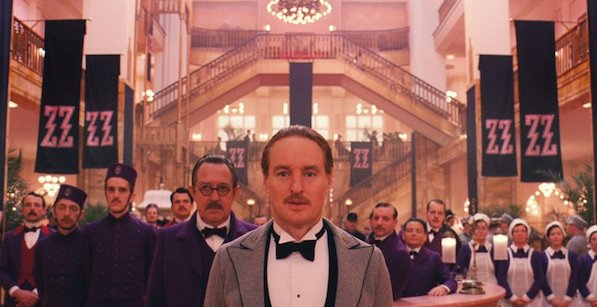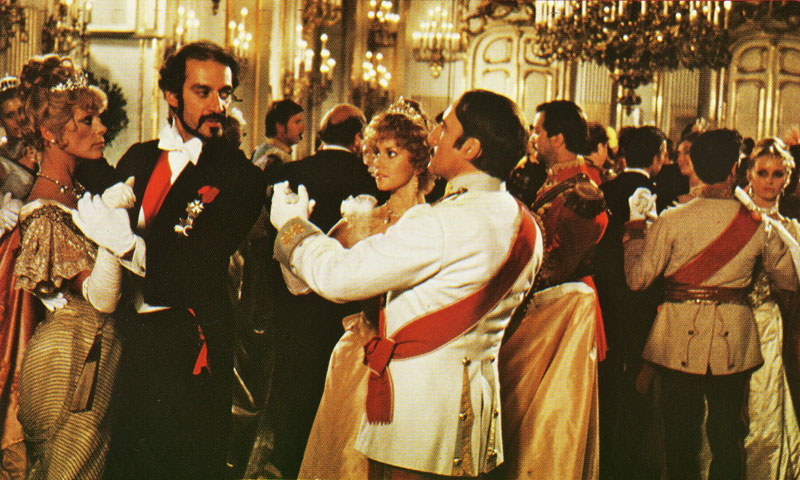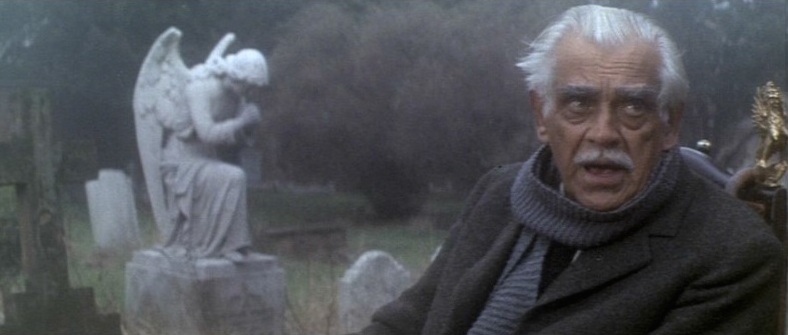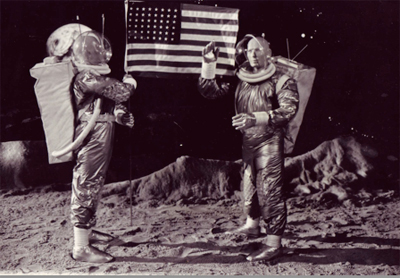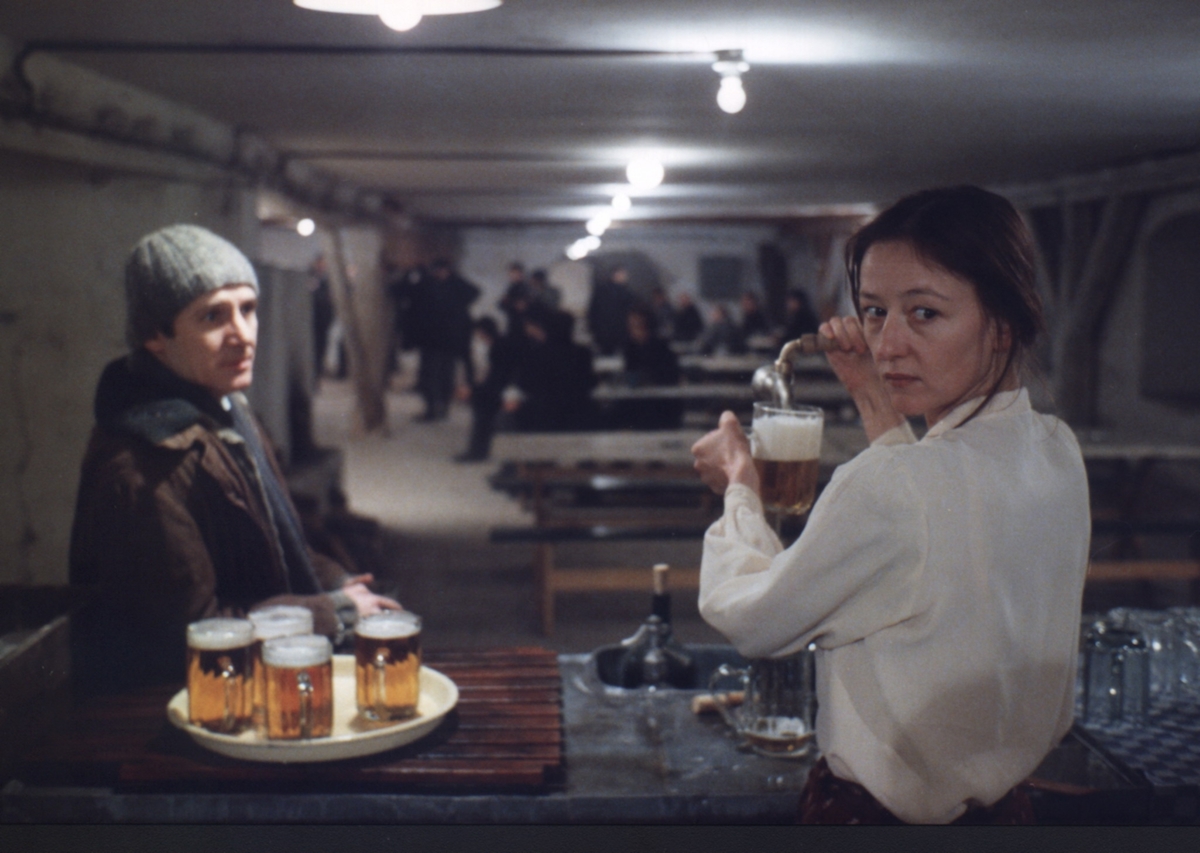Set in the imaginary European country of Zubrowka, Wes Anderson’s The Grand Budapest Hotel reminds us that some of the best stories take place in imaginary locations. As fictitious composites, cities like Brigadoon and Castle Rock, ones we know are made up from whole cloth, almost always reflect something funny, and strange about their creators’ imagination. In time for Wes Anderson’s new fantasy, here’s a list of five archetypal imaginary cities.
San Marcos in Bananas (1971): Thirdworldistan
Many times, fictional third world countries reflect how ass-backwards the developed world is. Thirdworldistan inhabitants only appear more barbaric at first. Soon enough, they prove themselves to be smarter, more honest, and soulful than the typically white first-world diplomats that visit them. So it’s refreshing to see a comedian like Woody Allen giggle helplessly at the idea of being some poor country’s white knight. In Bananas, Allen’s Fielding Melish travels to San Marcos so he can impress Louise Lasser‘s Nancy. She wants to help overthrow that country’s insane dictator, a man that fusses over bad tailoring, and good danishes. But Fielding only wants to make it with Nancy. Still, because this is a Woody Allen film, he somehow joins the rebels—clueless machos that steal wheel-barrows full of cole slaw for sustenance—Mellish is democratically selected to depose the equally-insane San Marcan leader. Then he dons a clip-on beard, and returns to America only to realize that his home country is just as neuroses-infested as San Marcos (the kangaroo court finale is riotous). If Howard Cosell’s ubiquitous presence is any indication, San Marcos is just as bad as New York.
Other Noteworthy Thirdworldistans: Zamunda in Coming to America, Ishtar in Ishtar.
Ruritania in The Prisoner of Zenda (1979): Old-Timey Euroville
By contrast, imaginary countries like Parador in Moon Over Parador or Freedonia in Duck Soup typically serve as a direct kind of self-mockery. These cities are more familiar, full of preening nobles, absurd customs, and revolting peasants. They’re familiar because they all look fairy tales: castle spires, cobble stone streets, superstitious/subservient locals. But all of them are run by Looney Tunes aristocrats, like the ones in The Prisoner of Zenda. The 1979 version of the film, starring Peter Sellers in three roles, is the least serious of the three film adaptations of Anthony Hope’s adventure novel. In the 1979 version, Sellers’ mad, hedonistic despot is threatened by his crazed half-brother Michael (Jeremy Kemp) after their father (also Sellers) dies in a hot-air balloon accident. Michael’s actions—abducting and using a hapless cab driver (Sellers again) to serve as his brother’s body double—is typical of the film’s loosey-goosey attitude towards Ruritania and its inhabitants. It’s an enchanted place run by cartoon characters, equal parts goony and sincerely romantic.
Other Noteworthy Old-Timey Eurovilles: Flausenthurm in The Smiling Lieutenant, Parador in Moon Over Parador, Freedonia in Duck Soup, Toyland in Babes in Toyland, Vulgaria in Chitty Chitty Bang Bang, Summerisle in The Wicker Man, Grand Fenwick in The Mouse That Roared, Latveria in pretty much any Marvel comic book.
Arkham in Die, Monster, Die (1965): Lovecrafton, U.S.A.
The pervasive influence of H.P. Lovecraft‘s horror fiction can be charted geographically thanks to the ubiquitous presence of “Miskatonic University” and the imaginary village of Arkham. Arkham, in particular, is the source of inspiration for everything from Gotham City’s Arkham Asylum, a mental hospital that pops up in all things Batman, to Castle Rock, an imaginary city featured in such films as Stand By Me and Cujo. Originally, Arkham was a dark, sleepy sea-side town located not unlike other fake Lovecraft towns Dunwich and Innsmouth. Each of these small towns comes to life after—you guessed it—a stranger comes to town. This is especially true in Die, Monster, Die, a Lovecraft pastiche starring Boris Karloff. In the film, Nick Adams’s Stephen Reinhart discovers that his fiancee’s estate, inhabited by a desperately cagey Karloff, is besieged by a mysterious alien presence. The town’s inhabitants are typically reluctant to talk to Reinhart. They know his appearance heralds a transformative final stage for their moribund city. Which is striking, since Arkham is Lovecraft’s composite for the New England towns of his youth. Each time a new stranger comes to town, Arkham is spontaneously rebuilt, then destroyed by itself, and the visitor that revived it.
Other Noteworthy Lovecrafttons: Silent Hill in Silent Hill, Castle Rock in The Dark Half, the city in City of the Living Dead, Potter’s Bluff in Dead & Buried, Newton Haven in The World’s End, Antonio Bay in The Fog.
City on the Moon in Nothing Lasts Forever (1984): City on the Edge of Forever
Probably the saddest location on this list, mostly because it represents missed opportunities, and disappointing fantasies. More often than not, cities of the future look pretty, but hide great problems. The future is never just bright, but bright, and false, as in Nothing Lasts Forever, a long-unavailable comedy starring Saturday Night Live comedians like Dan Aykroyd and Bill Murray. In the film, Zach Gilligan’s Adam Barrett follows his dream of being a truly great artist by fleeing to the moon. He escapes on a charter bus populated by happy geriatrics that drink Lunartinis, and babble excitedly about shopping. But while Gilligan does find his true love on the Moon, the city really is an outlet mall in space. There’s nothing magical or special about it save for its exotic location, a fact that you could easily forget if you stay indoors.
Other Noteworthy Cities On the Edge of Forever: Futureworld in Futureworld, The mining town in Outland, Metropolis in Metropolis.
The Unnamed Village in The Castle (1997): Kafkaland
The dark side to Old-Timey Euroville is Kafkaland, anonymous anytowns populated by fearful, anonymous, dreary people. When strangers come to town, it’s because they’re about to be punished in some vague, unknowable way. So in The Castle, Michael Haneke’s adaptation of Franz Kafka’s unfinished novel, the point is that we can never know what awaits K (Ulrich Muhe) in the titular castle. The city is, after a fashion, impenetrable, shrouded in a haze of black memories and darker skies. Like every other archetypal city on this list, it’s a fantasy world, one based on wish fulfillment. But unlike the other cities, The Castle‘s village will always be impenetrable.
Other Noteworthy Kafkalands: Wherever The Street of Crocodiles is set, Wonderland in Jan Švankmajer‘s Alice, The Town of the Crazies in Gymkata, Republic of Miranda in The Discreet Charm of the Bourgeoisie.

